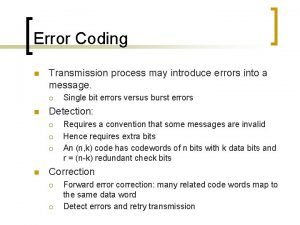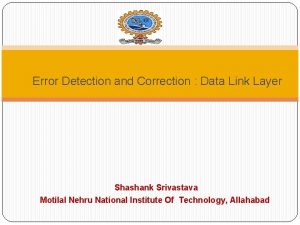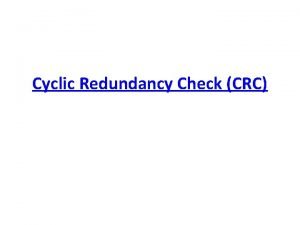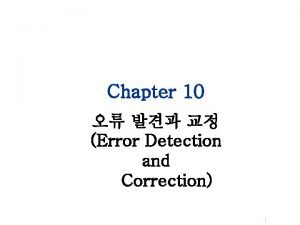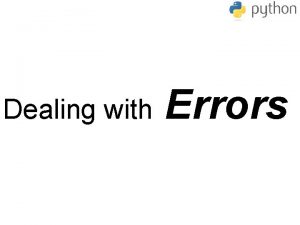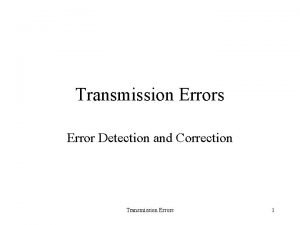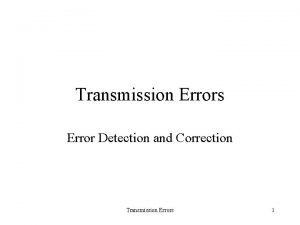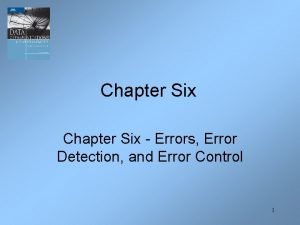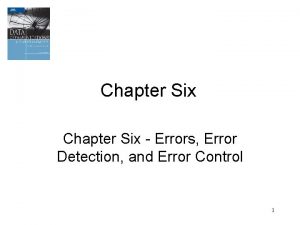Systematic Errors Detection and elimination of systematic error






- Slides: 6

Systematic Errors Detection and elimination of systematic error sources

Systematic errors: These errors are called correctable errors. The source of systematic errors can be identified and their effect on the results eliminated. They tend to deviate from the results of the analytical method, and these errors affect the accuracy of the analysis results. The magnitude of systematic error in repeated measurements in the same way is the same. There are three different sources that cause a systematic error. These; tool errors, method errors and personal errors. The effect of systematic errors on analytical results can be constant or proportional. Fixed errors are errors that are independent of the sample quantity and are relatively more important as the sample quantity decreases. Proportional errors are errors that increase or decrease in proportion to the sample quantity. The relative error in proportional errors can be fixed.

The figure showes that systematic fixed errors, when the large circules are the amount of analyte (5 g; 20 g, 50 g and 100 g) in the case of errors made to increase the amount of 1 g analyte indicated by small circules. As seen in figure, when the analyte is 5 g absolute error is 1 g and relative error is 20%. However, absolute error in 20 g analyte is 1 g relative error 5%; Absolute error in 50 g analyte is 1 g relative error 2% and absolute error in 100 g analyte is 1 g while relative error is 1%. As can be seen, absolute error does not change in systematic fixed errors, while relative errors decrease as the amount of analyte increases. Their effect on the result can be removed by addition or subtraction. By detecting the absolute error, systematic fixed errors can be corrected by increasing the effect on the result and decreasing by subtraction.

Consider the different amounts of analyte (10 g; 20 g; 50 g and 100 g) that were systematically proportional (25% missing) during the analysis to explain systematic proportional errors. The analyte should be 7. 5 g for 10 g, 15 g for 20 g, 37. 5 g for 50 g, and 75 g for 100 g. The relative errors are 25% for each analyte, while the absolute errors are -2. 5 g for the first analyte, 5 g for the second analyte, 12. 5 g for the third analyte and 25 g for the fourth analyte. As a result, as the amount of analyte increases in systematically proportional errors, the absolute error changes even if the relative error does not change.

Systematic errors can be divided into 3 groups in terms of the sources in which they ocur: 1 - Instrument errors are the errors that occur in the calibration of instruments such as pipettes, burettes, scales, metered balloons, electronic instruments used in the analytical method. To prevent such errors the instruments must be calibrated. 2 - Method errors, reagents used in the analytical method and the reactions on which the method is based, slowness, incompleteness and so on. reasons are the errors that occur as a result of non-ideal behavior. In addition, impurities in the sample that show similar reactions with the analyte or disturb the reaction of the analyte are sources of method error. In determining the method errors, methods such as standard sample analyzes similar to the analyzed sample composition, analysis of the sample by a completely different method and blanck determinations are used. In addition, the amount of the sample can be changed to determine whether the error is fixed or proportional.

3 - Personal errors are those that arise from physical defects, prejudice and sloppy work of the person applying the method and most of these errors can be eliminated with careful and regular work. Errors caused by physical defects can be eliminated using a method that is not affected by this physical defect. Detection of systematic method errors: - Analysis of standard samples - Alternative method analysis with confirmed accuracy - Blanck determinations - Changing sample quantities.
